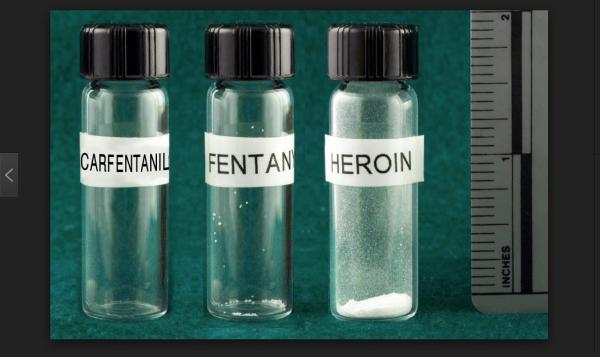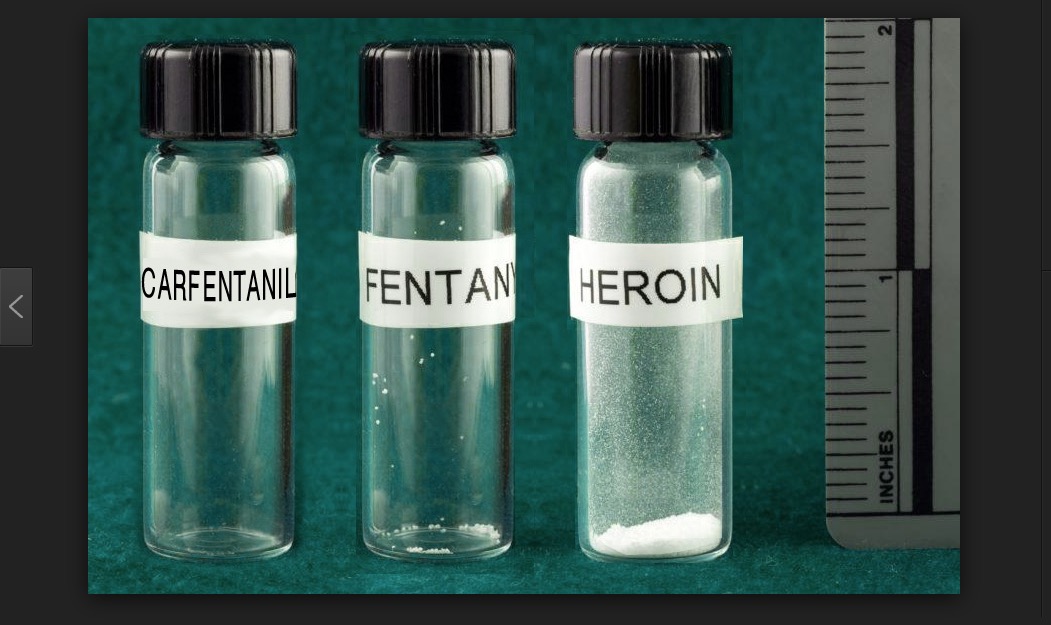
The Associated Press headline itself is rather interesting: "Chinese nationals indicted on illegal drug manufacturing." And so is the story. Given that virtually all of the fentanyl and (far worse) fentanyl analogs are being made in China, it is no surprise that Chinese authorities discovered and closed down two fentanyl factories, which had the capacity to make tons of the drug. Make that drugs. Because this is the heart of the story. We are not talking about fentanyl itself, but rather, its "chemical cousins."
It may strike you as odd that drugs that were being made in China are legal in the United States. (1) How can this be possible? It turns out that what the Chinese were doing is conceptually identical to what I did for a quarter century in drug discovery research: chemical modification of molecules or drugs in order to make them novel and superior. The difference here is that the goals in China were legality and (maybe) superiority. To understand this you have to know a little about structure-activity relationships (SAR) and chemical novelty (2).
Ironically, fentanyl provides the quintessential example of the power of SAR. Figure 1 shows the chemical structures of fentanyl and 3-methylfentanyl. Even those of you who are not chemists can see that the two drugs are very similar, differing by only a single methyl (CH3) group (in red). But this small change makes quite a big difference.

Figure 1: The addition of a methyl group (red) to fentanyl (left)—a minor structural change— produces an effect that is anything but. The potency of 3-methylfentanyl (right) is estimated to be 100-times that of fentanyl.
Simple changes like this affect more than the potency of the drug. They also can turn an illegal drug into one that is legal because of the peculiarities of the Federal Analogue Act of 1986. It is 5,000 shades of gray. So much so that it is difficult to ascertain whether "a new fentanyl" is legal or not. Most of these cases end up being decided in court since the language of the 1986 act is ambiguous.
"A controlled substance [analog] shall, to the extent intended for human consumption, be treated, for the purposes of any Federal law as a controlled substance in schedule I." (3)
21 U.S. Code § 813 - Treatment of controlled substance analogues. Cornell University Legal Information Institute.
So, what's the problem? Sounds clear enough. If drug X is illegal and drug Y, which is similar and does more or less the same thing as drug X, then Y is illegal. The key word here is similar. This is where the shades show up. "Similar" in organic chemistry is very open to interpretation. Put 10 organic chemists in a room with a bunch of chemical structures and there might be 11 different opinions about which are similar and why. But most will agree that molecules which have the same pharmacophore— the portion of the drug that is responsible for its effect. Which is exactly what is going on in China.
It is clear that these guys knew what they were doing:
"[Xiaobang] Yan [one of the two men indicted], who operated at least two chemical plants in China that were capable of producing tons of fentanyl, would monitor drug legislation and law enforcement actions in the U.S., changing the chemical structure of his drugs to avoid prosecution..."
Source: Associated Press
Sounds familiar, no? Making systematic changes in the structure of a drug and testing to see whether the drug is better, worse, or the same (SAR) is one of the cornerstones of drug discovery. But SAR is not used solely for making drugs that are better or legal. It is a powerful tool to make them novel, which was the strategy that Yan used.

A lethal dose of heroin, fentanyl, and carfentanil. Is it any wonder that people are dying? Very scary. Photo: New Hampshire State Police Forensic Lab
And the stakes are high, not just for illegal drugs but for legal ones as well. Similarity determines patent ownership, and the amount of time and money spent by companies that argue in court very subtle points about what is novel and what is not is astronomical. So is the amount of money at stake. Pharmaceutical patents are constantly being challenged by generic drug companies. The generic company argues that the patented drug isn't novel enough (e.g., too similar to known drugs) to constitute an invention and that the patent should be invalidated. This would allow the generic company to make and sell the brand drug since it would no longer be covered under a valid patent (4). Generic drug companies have entire teams of lawyers devoted solely to this.
No one could possibly put this better than Dr. Dan Berger, my former Wyeth colleague, who became a patent agent after Pfizer bought and subsequently incinerated Wyeth.
"Adding, for example, a methyl group is considered obvious in patent law. However, when the activity goes up 1000-times, a company can argue that it has an unexpected and 'novel' property, which is a new invention. Who wins? Whoever has the best lawyers"
Dan Berger, Ph.D. Former Principal Scientist at Wyeth
The power or organic synthesis is vast, and it can be used for good and evil. It has given us drugs that have saved millions of lives that would have been lost to AIDS but also others that claim thousands of others every year. What is going on in China now is pure evil.
Notes:
(1) It would seem that the Chinese government has a different interpretation of what "legal" means. These guys are in all sorts of trouble. And it's about time this happened. China is where almost all of our deadly opioid street drugs are made.
(2) I wrote about this topic last year. See: Designer Drug Whack-A-Mole Is Like Juggling Jello. Any two organic chemists can look at the structure of two drugs and have very different opinions about the degree of similarity. This is rarely a "right" answer.
(3) Schedule I drugs, which are determined by the DEA, have a high potential for abuse and no approved medical use. All of them are illegal. Heroin is on the list but fentanyl is not. It has approved medical uses. Marijuana is still Schedule I, which is just insane. Any list that contains both heroin and marijuana is a crazy list.
(4) Patents, which are described in the Constitution, give an inventor the opportunity to exclusively make, sell, or use a given invention for a limited amount of time. It does not mean the inventor has permission to sell or use something, just that no one else can. For example, pharmaceutical patents do not mean that a drug can be sold (this is up to the FDA), just that no one else can make or sell the drug during the time of coverage.



